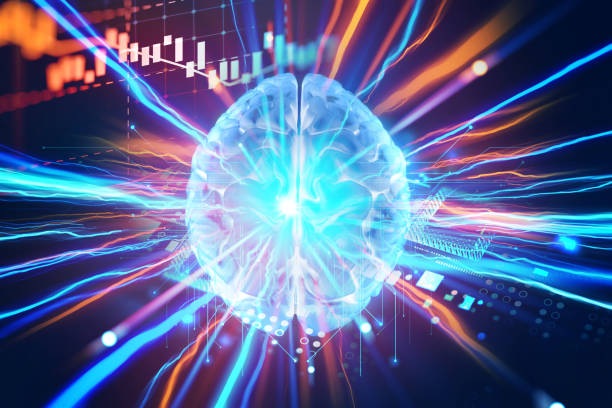What is an AI robot? Definitions and basic concepts

What is an AI robot? Definitions and basic concepts
#AI_robot is a combination of two distinct fields: #robotics and #artificial_intelligence.
In brief, robotics deals with the design, construction, operation, and application of robots, while artificial intelligence (AI) is a branch of computer science whose goal is to create machines capable of performing tasks that typically require human intelligence.
When these two fields are combined, the result is robots that can not only perform physical tasks but also think about their environment, learn, and make decisions.
A typical robot consists of a set of sensors, actuators, and a controller.
Sensors collect information about the environment, actuators perform physical movements, and the controller decides how to control the actuators based on the information received from the sensors.
AI robots, in addition to these components, have artificial intelligence algorithms that enable them to analyze data, recognize patterns, learn from previous experiences, and make decisions that help them achieve their goals.
These algorithms can utilize machine learning [https://fa.wikipedia.org/wiki/%DB%8C%D8%A7%D8%AF%DA%AF%DB%8C%D8%B1%DB%8C_%D9%85%D8%A7%D8%B4%DB%8C%D9%86], deep learning [https://fa.wikipedia.org/wiki/%DB%8C%D8%A7%D8%AF%DA%AF%DB%8C%D8%B1%DB%8C_%D8%B9%D9%85%DB%8C%D9%82], natural language processing [https://fa.wikipedia.org/wiki/%D9%BE%D8%B1%D8%AF%D8%A7%D8%B2%D8%B4_%D8%B2%D8%A8%D8%A7%D9%86_%D8%B7%D8%A8%DB%8C%D8%B9%DB%8C] and other artificial intelligence techniques.
Simply put, an AI robot is a robot equipped with artificial intelligence capable of performing tasks that typically require human intelligence.
These robots can operate in complex and unpredictable environments, make intelligent decisions, and improve their performance over time.
Thus, AI robots have the potential to revolutionize various industries.
Did you know 94% of the first impression of a company is related to its website design?
Rasawweb, by providing professional corporate website design services, helps you create the best first impression.
✅ Create a professional and trustworthy image for your brand
✅ Easier attraction of potential customers and improvement of online standing
⚡ Get a free corporate website design consultation
Main components of an AI robot: sensors, processor, and actuators
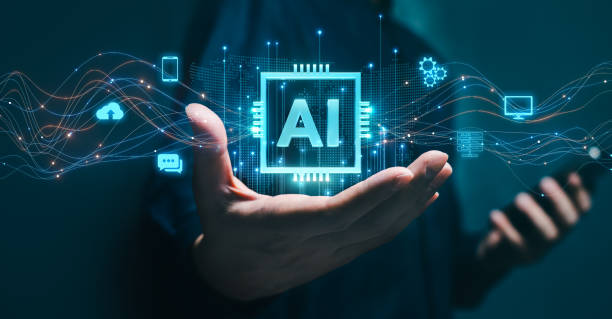
Main components of an AI robot: sensors, processor, and actuators
An #intelligent_robot consists of three main components that work in harmony to enable the robot to operate in its environment: #sensors, #processor, and #actuators.
Each of these components plays a vital role in the overall performance of the robot.
Sensors
Sensors are like the robot’s eyes and ears.
They collect information about the surrounding environment.
This information can include visual data (via cameras), auditory data (via microphones), tactile data (via touch sensors), data related to temperature, pressure, distance, etc.
AI robots use different types of sensors to fully understand their environment.
Processor
The processor is the robot’s brain.
This part is responsible for processing the information collected by the sensors and deciding how to react to that information.
The processor uses artificial intelligence algorithms to analyze data, identify patterns, learn from experiences, and make decisions.
The processor can be an internal computer or a cloud system.
Actuators
Actuators are the robot’s muscles.
They perform physical movements.
These movements can include moving arms and legs, rotating wheels, grasping objects, opening and closing doors, etc.
Actuators are typically motors, cylinders, pumps, and other mechanical devices.
These three components work together to enable the robot to operate in its environment.
Sensors collect information, the processor analyzes the information, and actuators perform physical movements.
The AI robot uses this continuous feedback loop to learn and improve its performance.
Types of AI Robots: Classification by Application and Structure

Types of AI Robots: Classification by Application and Structure
#AI_robots can be categorized based on various criteria.
Two common methods for classifying these robots are based on their application and structure.
Classification by Application
* Industrial Robots Industrial robots are used in factories and other industrial environments to perform repetitive, dangerous, or difficult tasks.
These robots can be used for welding, painting, assembly, packaging, and other tasks.
* Service Robots Service robots are designed to provide services to humans.
These robots can be used in homes, hospitals, hotels, restaurants, and other environments.
Service robots can be used for cleaning, food delivery, elder care, education, and other tasks.
* Medical Robots Medical robots are used in hospitals and other healthcare facilities to assist doctors and nurses.
These robots can be used for surgery, rehabilitation, drug delivery, and other tasks.
* Military Robots Military robots are used in the military to perform dangerous or difficult tasks.
These robots can be used for reconnaissance, bomb disposal, equipment transport, and other tasks.
* Space Robots Space robots are used for space exploration and performing tasks that are dangerous or difficult for humans.
These robots can be used for collecting soil samples, repairing satellites, and other tasks.
Classification by Structure
* Robotic Arms Robotic arms have an arm that can move in different directions.
These robots are commonly used in industry for assembly and packaging tasks.
* Mobile Robots Mobile robots can move in the environment.
These robots can be wheeled, legged, or aerial.
Mobile robots are commonly used in warehouses, hospitals, and other environments for delivering goods and performing other tasks.
* Humanoid Robots Humanoid robots resemble humans.
These robots are typically designed for interacting with humans.
Humanoid robots can be used for education, elder care, and other tasks.
* Underwater Robots Underwater robots can swim in water.
These robots are commonly used for exploring seas and oceans.
| Type of Robot | Application |
|---|---|
| Industrial | Welding, painting, assembly |
| Service | Cleaning, food delivery, care |
| Medical | Surgery, rehabilitation, drug delivery |
Applications of AI Robots in Various Industries: Case Study
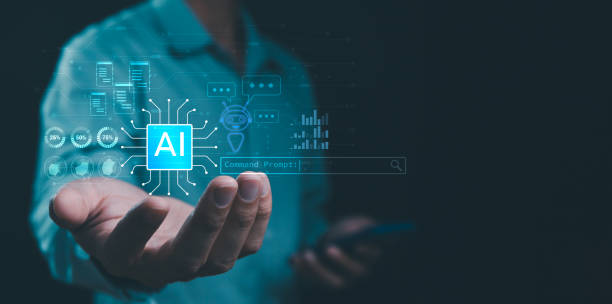
Applications of AI Robots in Various Industries: Case Study
Due to their ability to perform complex tasks and automate processes, AI robots have found widespread applications in various industries.
Here, we will review case studies of the applications of these robots in several key industries.
Manufacturing Industry
In the manufacturing industry, #AI_robots are used for tasks such as assembling components, quality inspection, and packaging products.
These robots can work with high precision and speed, thereby increasing productivity and product quality.
For example, automotive companies use AI robots for welding, painting, and assembling car parts.
Healthcare Industry
In the healthcare industry, AI robots are used for performing precise surgeries, assisting with patient rehabilitation, and providing nursing services.
These robots can help doctors and nurses provide better services to patients.
For example, surgical robots can perform minimally invasive surgeries with higher precision.
Logistics Industry
In the logistics industry, AI robots are used for warehousing, transporting goods, and delivering packages.
These robots can work with high speed and accuracy, thereby reducing transportation and delivery costs.
For example, online retail companies use AI robots for warehousing and packaging orders.
Agriculture Industry
In the agriculture industry, #AI_robots are used for planting, cultivating, and harvesting crops, as well as for monitoring plant and livestock health.
These robots can help farmers produce more crops using fewer resources.
For example, agricultural robots can automatically eliminate weeds and harvest crops.
Are you losing potential customers due to an unprofessional website? Rasaweb is your answer! With our specialized corporate website design services:
✅ Enhance your business’s credibility and standing
✅ Experience more targeted lead and customer acquisition
⚡ Act now to receive a free consultation!
Benefits of Using AI Robots: Increased Productivity and Cost Reduction
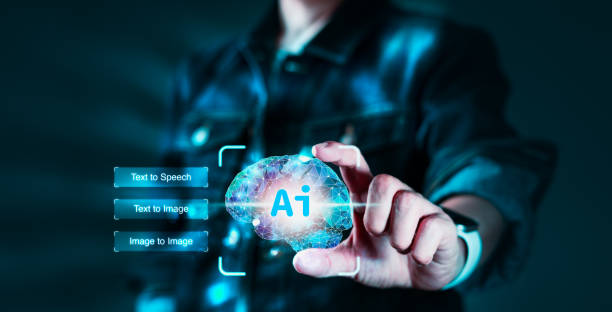
Benefits of Using AI Robots: Increased Productivity and Cost Reduction
The use of #intelligent_robots brings numerous benefits to various industries.
These benefits include increased productivity, reduced costs, improved quality, enhanced safety, and the ability to perform difficult or dangerous tasks.
Increased Productivity
AI robots can work continuously without fatigue.
This leads to increased productivity and higher output.
Robots can perform tasks with greater speed and accuracy than humans, which also contributes to increased productivity.
Cost Reduction
Although the initial investment for purchasing and setting up AI robots can be high, in the long run, they can reduce costs.
Robots do not require salaries, insurance, and other benefits.
Also, robots make fewer errors, which leads to reduced waste and rework.
Improved Quality
AI robots can perform tasks with greater precision and consistency than humans.
This leads to improved quality of products and services.
Robots can continuously monitor quality parameters and prevent errors.
Increased Safety
AI robots can perform dangerous tasks without endangering human lives.
This leads to increased safety in the workplace.
Robots can work in polluted, high-stress, and hazardous environments.
Performing Difficult or Dangerous Tasks
AI robots can perform tasks that are difficult or dangerous for humans.
For example, robots can work in the deep seas, in space, and in environments contaminated with radioactive materials.
Therefore, the use of AI robots can bring significant benefits to various industries.
These benefits include increased productivity, reduced costs, improved quality, enhanced safety, and the ability to perform difficult or dangerous tasks.
Challenges and Limitations of AI Robots: Cost, Security, and Ethics
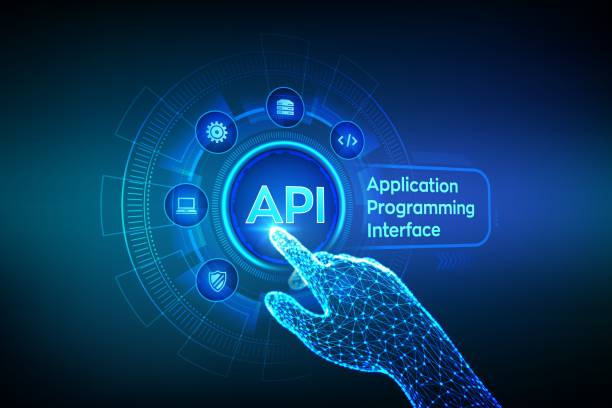
Challenges and Limitations of AI Robots: Cost, Security, and Ethics
While AI robots have great potential to revolutionize various industries, they also face challenges and limitations.
These challenges include cost, security, ethics, and employment concerns.
Cost
Developing, building, and maintaining AI robots can be very expensive.
Costs related to research and development, hardware, software, training, and maintenance can be a major barrier for many companies.
Security
AI robots can be vulnerable to cyberattacks.
Hackers can gain control of robots and use them for malicious purposes.
Also, robots can unintentionally cause harm if they are not programmed correctly or if they operate in unpredictable environments.
Increasing AI Robot Security [https://arvandsecurity.com/artificial-intelligence-security/]
Ethics
The use of AI robots raises important ethical questions.
For example, who is responsible for the decisions robots make? How can it be ensured that robots act fairly and without discrimination? How can robots be prevented from being used for malicious purposes?
Employment Concerns
One of the biggest concerns about AI robots is that they can lead to job losses for humans.
Robots can automate many tasks previously performed by humans.
This can lead to increased unemployment and economic inequality.
However, some experts believe that robots can also create new jobs and contribute to economic growth.
Furthermore, there are technical limitations.
For example, robots still struggle with understanding natural language, reasoning, and solving complex problems.
Also, robots cannot fully understand human emotions or show empathy.
The Future of AI Robots: Predictions and Emerging Trends

The Future of AI Robots: Predictions and Emerging Trends
The future of #AI_robots looks very promising.
With technological advancements, robots will become smarter, more flexible, and more cost-effective.
This will lead to an expansion of robot applications in various industries and daily life.
Advances in Artificial Intelligence
Continuous advancements in artificial intelligence, such as deep learning, natural language processing, and computer vision, will allow robots to perform more complex tasks and interact more effectively with humans.
Development of Advanced Sensors
More advanced sensors will help robots better understand their surroundings.
This will allow robots to operate in complex and unpredictable environments.
Cost Reduction
With increased production and improved technology, robot costs will decrease.
This will make robots accessible to small and medium-sized enterprises as well.
Human-Robot Collaboration
In the future, we will see increased collaboration between humans and robots.
Robots will help humans perform their tasks more effectively, and humans will help robots solve complex problems.
New Applications
Robots are currently used in various industries such as manufacturing, healthcare, logistics, and agriculture.
In the future, we will see an expansion of robot applications in new industries such as education, entertainment, and personal services.
Overall, the future of #intelligent_robots is bright.
With technological advancements, robots will play a more significant role in our lives.
Impact of AI Robots on the Job Market: Opportunities and Threats

Impact of AI Robots on the Job Market: Opportunities and Threats
The emergence of #intelligent_robots has had significant impacts on the job market, and these impacts continue to grow.
These impacts create both opportunities and threats.
Threats
One of the biggest concerns about AI robots is that they can cause job losses for humans.
Robots can automate many tasks previously performed by humans.
This can lead to increased unemployment and economic inequality.
Jobs most at risk of automation are those that are repetitive, routine, and require low skills.
For example, production line workers, truck drivers, and telephone operators are among the jobs that may be replaced by robots in the future.
Opportunities
However, AI robots can also create new opportunities in the job market.
Robots can create new jobs in the fields of robot design, manufacturing, maintenance, and operation.
Also, robots can help humans perform their tasks more effectively, which leads to increased productivity and economic growth.
Jobs requiring high-level skills, creativity, problem-solving, and social interaction are less at risk of automation.
Education and Adaptation
To take advantage of the opportunities created by AI robots and prevent the threats arising from them, the workforce must be educated and adaptable.
Individuals need to learn new skills that prepare them for future jobs.
Governments and companies must invest in education and training so that the workforce can adapt to the changes caused by automation.
Robot and AI Programming [https://maktabkhooneh.org/mag/robotic-coding-python/]
| Opportunities | Threats |
|---|---|
| Job creation in robot design and manufacturing | Loss of routine and repetitive jobs |
| Increased productivity | Increased unemployment and economic inequality |
| Economic growth | Need for workforce retraining |
Does your current corporate website present a worthy image of your brand and attract new customers?
If not, turn this challenge into an opportunity with Rasaweb’s professional corporate website design services.
✅ Significantly improves your brand’s credibility and image.
✅ Paves the way for attracting targeted leads and new customers for you.
⚡ Contact Rasaweb now for a free and specialized consultation!
Key Tips for Successful AI Robot Implementation
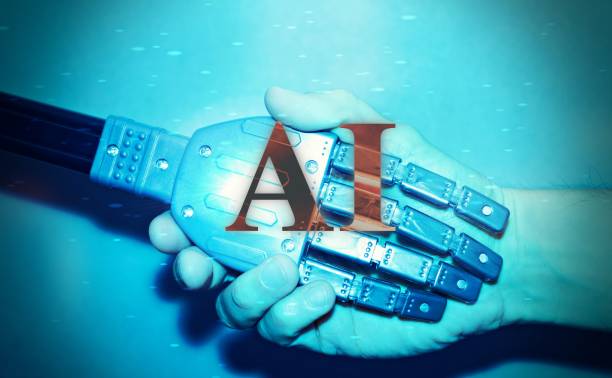
Key Tips for Successful AI Robot Implementation
Implementing #AI_robots in an organization can be a complex process.
To ensure the success of this process, several key points need to be considered.
Set Clear Goals
First and foremost, you must clearly define your goals for implementing AI robots.
Do you want to increase productivity? Reduce costs? Improve quality? Or enhance safety? Setting clear goals will help you choose the right AI robots and design your implementation plan more effectively.
Select Appropriate AI Robots
Various types of AI robots are available in the market.
You need to choose robots that are suitable for your specific needs.
Consider factors such as the tasks you want the robots to perform, the environment in which the robots will operate, and your budget.
Prepare Infrastructure
Before implementing AI robots, you need to prepare your infrastructure.
This includes ensuring sufficient space, adequate power, and high-speed internet connectivity.
Also, you may need to make changes to the physical layout of your workspace.
Train Employees
Your employees need to be trained to work with AI robots.
They need to learn how to interact with robots, how to troubleshoot and repair them, and how to use the data collected by robots.
Monitor and Evaluate
After implementing AI robots, you need to continuously monitor and evaluate their performance.
This will help you identify problems and improve robot performance.
By following these key tips, you can increase the chances of successful #intelligent_robot implementation in your organization.
Ethical Considerations in the Design and Use of AI Robots

Ethical Considerations in the Design and Use of AI Robots
As #intelligent_robots advance, attention to ethical considerations in their design and use becomes increasingly important.
Robots can have profound impacts on society, and it is essential to ensure that they are used responsibly and ethically.
Transparency and Accountability
Decisions made by robots must be transparent and explainable.
If robots make mistakes, responsibility must be taken, and recurrence of errors must be prevented.
Fairness and Non-discrimination
Robots should not act unfairly or discriminately.
They must treat all individuals equally, regardless of race, gender, religion, or other characteristics.
Privacy
Robots should not collect or use individuals’ personal information unless explicit permission has been obtained from them.
Collected information must be securely stored and used only for legitimate purposes.
Safety
Robots must be designed to be safe and not harm humans.
They must have safety systems that prevent harm in case of errors or accidents.
Control
Humans must always maintain control over robots.
Robots should not be allowed to make critical decisions independently that could affect human lives.
By considering these ethical considerations, #AI_robots can be used responsibly and ethically, benefiting from their advantages while preventing potential harm.
Frequently Asked Questions
| Question | Answer |
|---|---|
| What is an AI robot? | It is a robot that uses artificial intelligence capabilities to understand the environment, reason, learn, and make decisions to independently perform complex tasks. |
| What is the main difference between a regular robot and an AI robot? | AI robots can learn and adapt to their environment, while regular robots typically operate based on fixed, predetermined programming. |
| In what fields are AI robots used? | In fields such as industry (production lines), medicine (robotic surgeries), services (customer support, smart vacuum cleaners), exploration (space and underwater), and entertainment. |
| How do AI robots learn? | They acquire new skills by analyzing large data and identifying patterns through machine learning and deep learning algorithms. |
| Can AI robots have emotions? | Currently, no. They can recognize or simulate emotions, but they do not experience real emotions like humans. |
| What are the most important benefits of using AI robots? | Increased productivity, reduced human error, performance of dangerous or repetitive tasks, and provision of innovative and efficient services. |
| What challenges exist in the development of AI robots? | The need for abundant and high-quality data, algorithmic complexity, ethical issues, cybersecurity, and high research and development costs. |
| Are AI robots dangerous to humans? | With adherence to safe design principles and ethical regulations, no. Concerns are primarily related to social and economic impacts, such as changes in the job market. |
| What is an example of an AI robot in daily life? | Smart robotic vacuum cleaners (like Roomba) that automatically map and clean homes, or smart voice assistants (like Siri and Alexa). |
| How is the future of AI robots predicted? | They are expected to become smarter, more autonomous, and capable of more complex interactions with humans, playing a more prominent role in industry, medicine, transportation, and daily life. |
And other services of Rasaweb Advertising Agency in the field of advertising
- Smart Data Analysis: A fast and efficient solution to increase click-through rates with a focus on marketing automation.
- Smart UI/UX: A combination of creativity and technology to increase click-through rates through precise audience targeting.
- Smart Sales Automation: A fast and efficient solution for analyzing customer behavior with a focus on precise audience targeting.
- Smart Customer Journey Mapping: A fast and efficient solution for campaign management with a focus on custom programming.
- Smart Direct Marketing: Revolutionize digital branding with the help of SEO-centric content strategy.
And hundreds of other services in the field of internet advertising, advertising consultation, and organizational solutions
Internet Advertising | Advertising Strategy | Sponsored Articles
Resources
AI Articles on Zoomit
AI on Digikala Mag
AI Posts on Virgool
AI News on ISNA
? With Rasaweb Afarin, specialists in corporate website design, SEO, and digital marketing, have a powerful and influential presence in the online world.
📍 Tehran, Mirdamad Street, next to Bank Markazi, Southern Kazeroun Alley, Ramin Alley, No. 6



